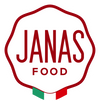PANE CARASAU: the Sardinian bread with a thousand qualities
Carasau bread, the undisputed protagonist of the Sardinian diet, was the essential nourishment of the shepherds during the long journeys for which they could not carry much load, they also used it as a dish for their meals. The long preservation of this typical Sardinian bread ensured the shepherds a product that was always fresh, good and above all versatile.
How do you eat Carasau bread?
Thanks to its versatility, Carasau bread is perfect on its own as a simple snack, as a crouton on which to spread vegetable creams or as a special base on which to arrange cold meats and cheeses. In fact, it is often used in place of plates and chopping boards to present delicious hors d'oeuvres of salami, sausage and cheese accompanied by delicious Sardinian wines.
Not only fresh and crunchy, Carasau bread is also excellent when baked: it can be transformed into delicious mille-feuilles for pies, lasagne or pies. It is also a precious ally for those days when you don't know what to cook, when you are in a hurry but don't want to give up taste and a healthy meal.
There are no limits to this special Sardinian crispbread.
But how is quality carasau bread made? How do you obtain an artisan product of excellence?
First of all, it is necessary to respect the leavening time. This is the only way to offer a product that releases the unique flavour of simplicity and genuineness.
Only in this way is it possible to produce very thin sheets of toasted bread, so crisp that they produce a particular sound when they are broken, which because of this unique characteristic, is also called "music paper".
If the bread is well leavened, as well as being tastier, it also reaches its maximum expression from an organoleptic point of view. In addition, the long leavening process reduces the glycemic index, which helps the pancreas to process the sugars contained in the bread. Careful leavening in respect of time obviously favours digestibility. This is a significant factor in appreciating the product and being included among the foods that contribute to the healthy and undisputed Sardinian diet, which for years has been the subject of numerous studies.
When the bread is not properly leavened, some enzymes, called proteases, have not had time to sufficiently attack the gluten, which then continues on its way to our bodies; the latter will have to work to digest the product, which is why it feels heavy and unsuitable for our bodies.
|
Our philosophy, on the other hand, is total respect for time, total natural processing. This allows the enzymes, the proteases, from as early as the third hour of leavening, to attack the gluten and 'prepare' it for our digestive system. It is commonly thought that leavening a product means obtaining a swollen 'ball' of dough, whereas for us, regardless of size, the dough must be mature, i.e. it must have fermented for a specific number of hours. The fact that the dough "ball" swells or more technically doubles in volume is not synonymous with excellent leavening. It is possible to increase its volume by simply increasing the quantity of yeast to a disproportionate amount and in a quarter of an hour it is possible to put it in the oven, but obviously the quality of the product will be drastically reduced. Digestibility, fragrance, taste and smell will suffer from the lack of a correct process and will leave room for a product of very poor quality. Instead, we prefer to respect time, to produce as in the past, following the leavening process of more than 12 hours in linen and cotton cloths to give our bread lightness and durability. Thanks to its timeless goodness, our carasau bread has received numerous awards, including the 1st Rome Prize, and has earned a leading role in contemporary cuisine. |
In fact, it is no coincidence that the Janas carasau bread is one of the most popular both in its classic version and in the guttiau version with oil and salt.
A tip for a quick and easy use of carasau bread?
Cut a few slices of peretta cheese, the classic and well-known Sardinian cheese also known as Sardinian provola, place them on the carasau bread, bake for 2 minutes and enjoy one of the fastest and tastiest dishes you can eat. The scent in the air and the goodness of melted peretta cheese are an invitation to make more and more of it.

